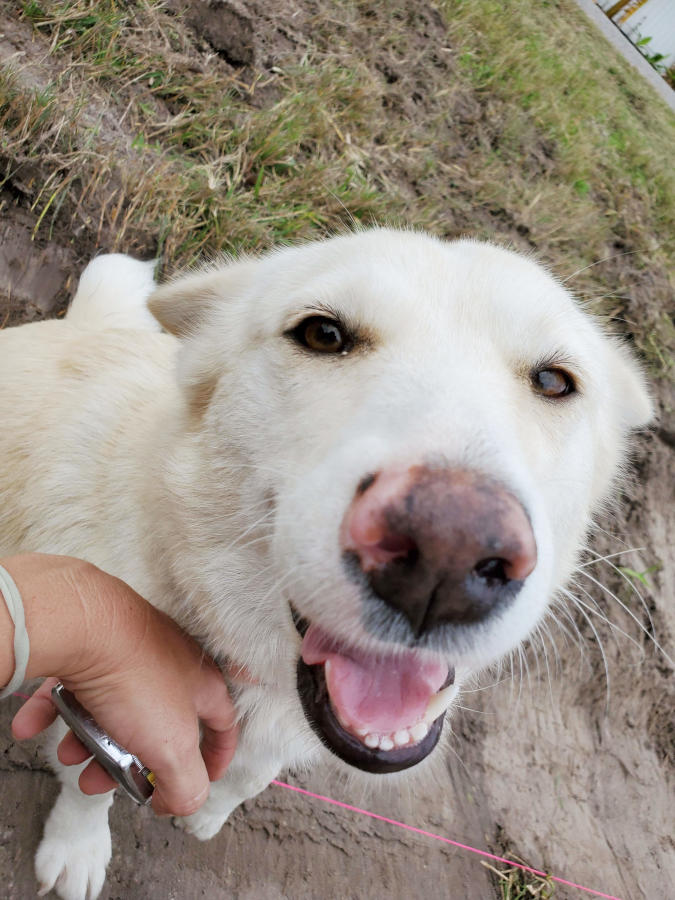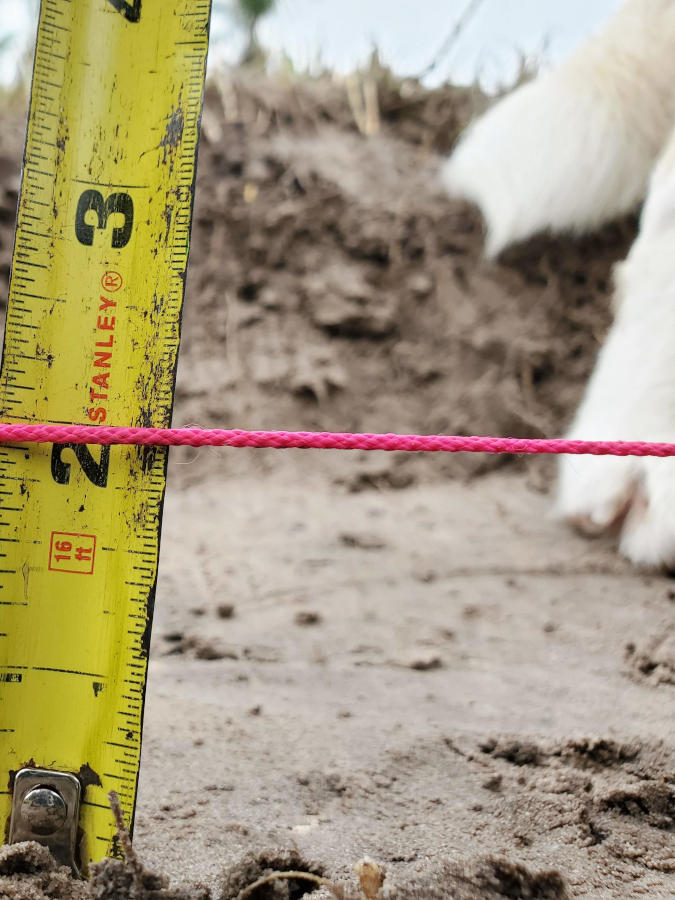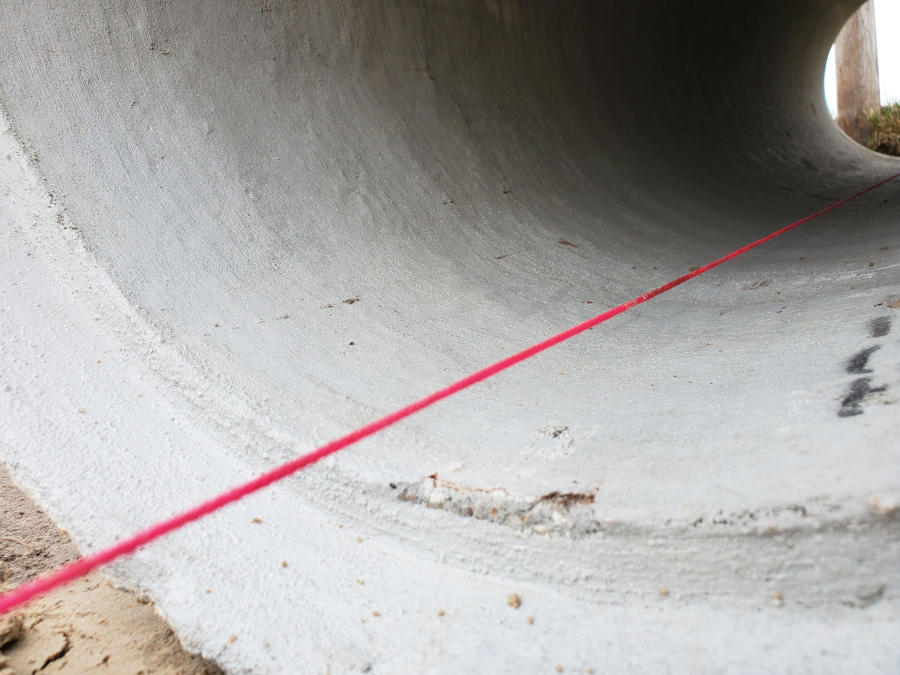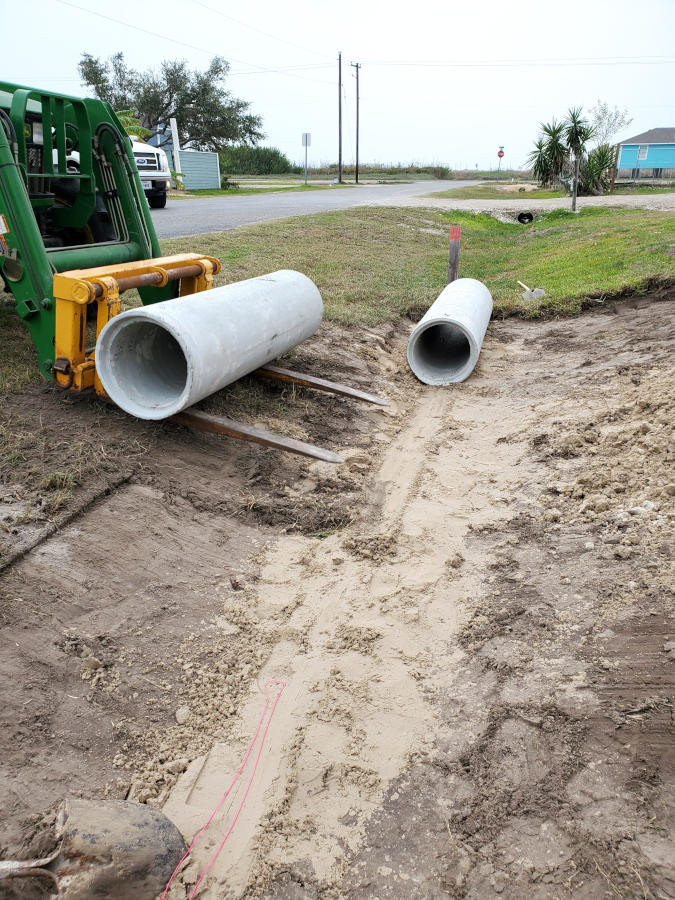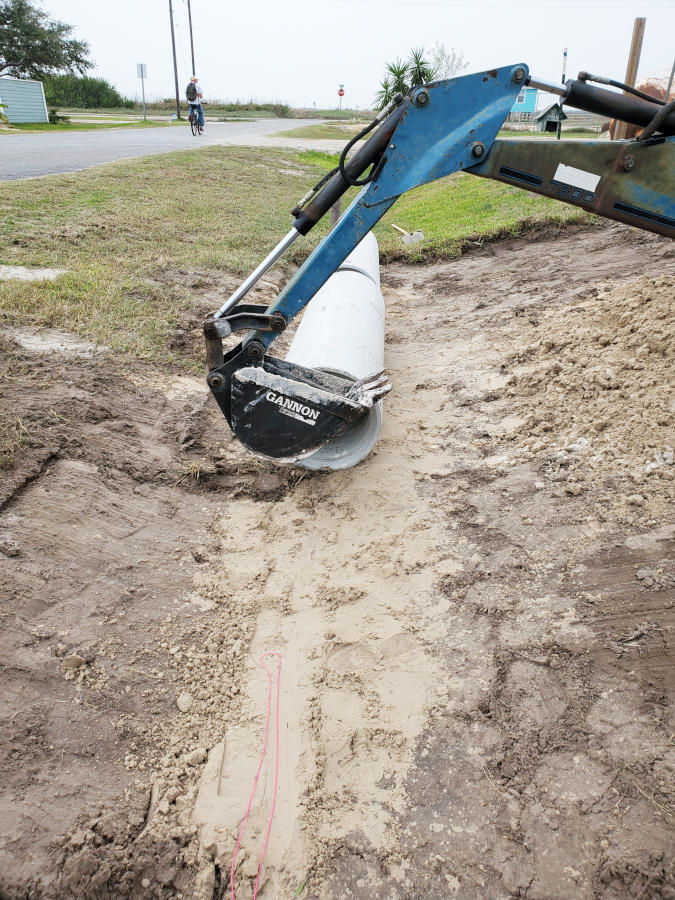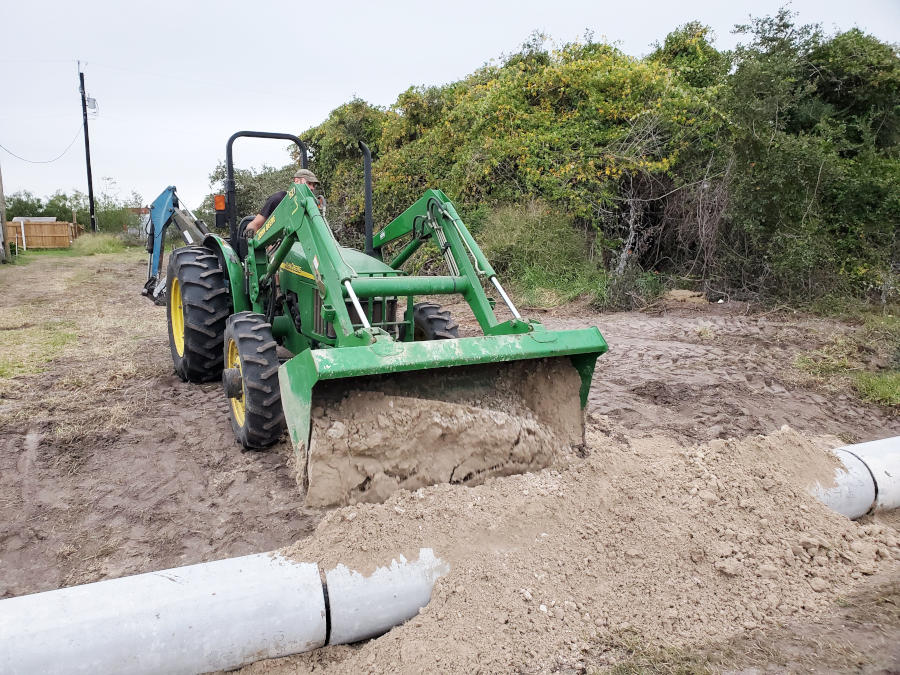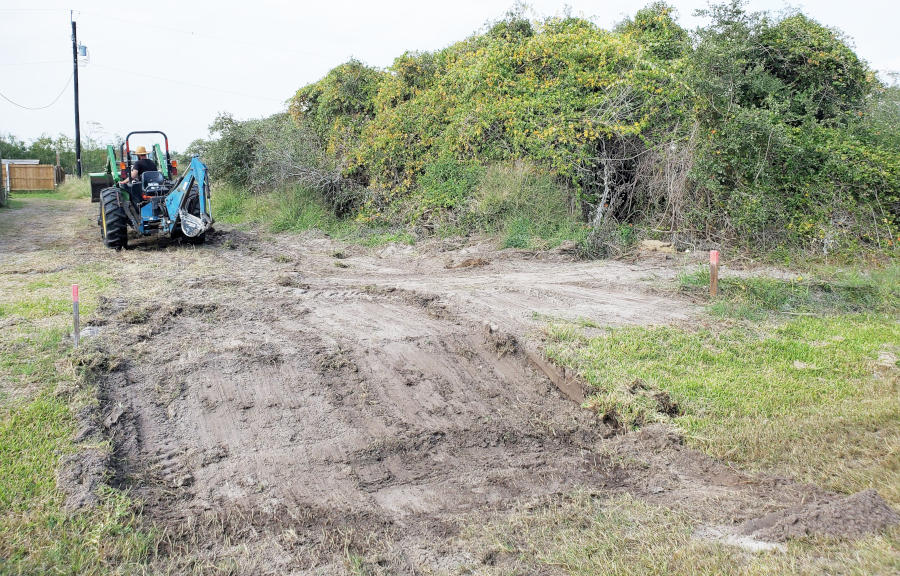
Drive this Way
Most projects started at Boxes in Fields start one day and finish the next, or the next, or more than likely never. Whatever. Today’s project was started yesterday and finished before noon today. But first there was this…
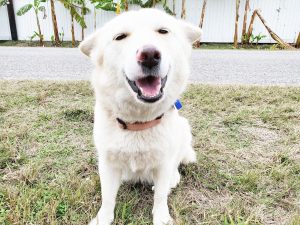
Doesn’t this just make you smile? She always makes me smile. Belonging to the neighbor across the street, Guera (pronounced w-e-t-a) is the happiest dog I have ever met. E.V.E.R. Enemies are unknown and all friends. And not just any friend but a long lost friend whom you haven’t seen in ages and the both of you are giddy with excitement at seeing each other. Except with Guera she acts this way every time she sees you. What is not love about that?
And the reason for the company of the neighbor’s dog, you ask. Well that would be because she is a nosy neighborhood dog and Boxes in Fields was working out front on the driveway. Guess she decided her assistance was required. In every step of the way.
Before a driveway, culverts were needed. To place culverts, we had to ensure the flood hub was met. Living in a flood zone does have it challenges, especially after the storm. Since Hurricane Harvey, the county is making sure all the drainage ditches are kept clean, new driveways are installed to the correct elevation, and standing water is corrected. All this id done in efforts to maintain their FEMA standing. By FEMA monies I mean their FEMA monies. No skin off my back, standing water in drainage ditches leads to mosquitoes and nobody needs or wants more of them.
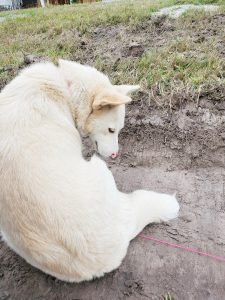
Trying to ensure the ditch was the correct height was a little challenging as the culvert hub was lower than the dirt in the ditch making line of sight difficult. Drawing a string line was the best way to achieve this without the use of fancy equipment. Having had Guera’s stamp (her bottom) of approval, the first of four culverts was laid.
The sting line was then ran inside the culvert. If the line touched the concrete, more dirt was removed until the line was clean and clear. Getting the culvert to not touch the line turned out to be quite a bit of work as it was difficult to remove with the tractor once it was laid in the ditch. Pushing forward, pulling back, twisting left, twisting right, Guera watched from a safe distance away as she is not fond of the tractor.
After the first culvert was laid, a smaller grove was dug using the backside of a shovel to create a deeper pocket for the subsequent culverts. As it turns out this was the perfect width to match the bottom of the culvert. Not that a culvert has a bottom as it is a circle but you get what I mean, right? The second culverts piece was laid and tested with the string line. Once depth was confirmed, the two culverts were pushed together until tight. Rinse and repeat two more times and ta-da, one 24′ culvert laid.
Sand fill was piled on either side high enough just to the tops of the culvert. The Planner says this is not the most correct way as the sand does not compact as tight and could lead to sag. But if this is how the county does it, then why spend the extra money on more base.
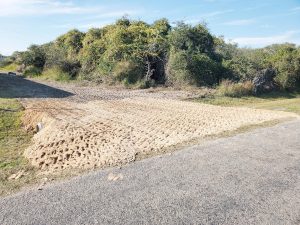
A light layer of base was installed to cover the sand. The string line will remain pulled through the culvert until the county gives the OK and we receive the stamp of approval for height correct height placement. Once the certificate arrives, the Planner will continue with the driveway. It was a full days and a bit worth of work but man-o-man it sure is nice to have a driveway. Even if it is just a partial driveway.
